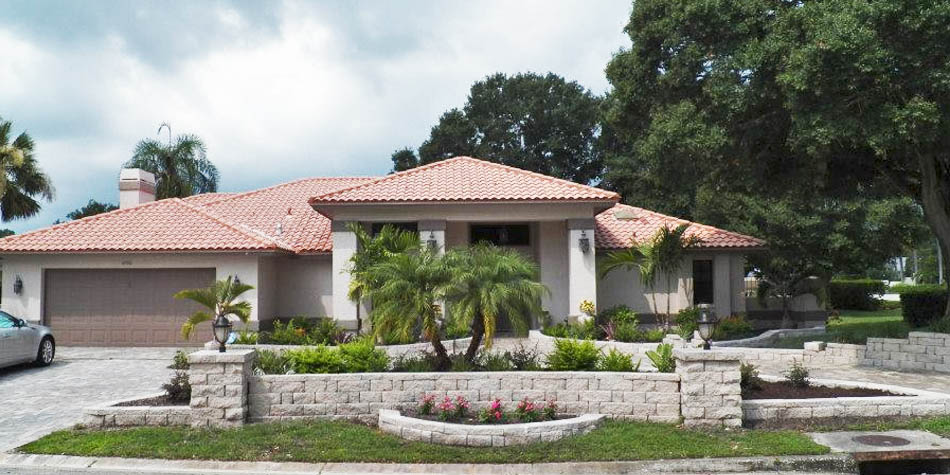Beauty and function come together when we create retaining & seating walls for your home or business.
The main purpose for a retaining wall is to stabilize/hold the soil in place, improve the slope and protect the land from erosion. Retaining walls also help to level land, create boundaries and level landscaping beds. Retaining walls serve an important function, but can also be added to your landscaping for aesthetic appeal. These types of walls often create an inviting spot to sit, adding function and doubling up as a seating wall.
When designing a new retaining or seating wall for our customers, the most important factor is that the wall serves its purpose. The retaining/seating walls we build will correct any slope issues with your property, prevent erosion problems and ensure proper drainage of rain waters. Once we have completed a functional design, the next step is to make sure it looks great! Retaining walls often double as seating walls, planters, landscaping beds or become part of an outdoor living area because they are both beautiful and functional.

What you may not know about retaining and seating walls.
When we build new retaining/seating walls in Palmetto, Parrish, Bradenton and surrounding areas, we often use the segmental retaining wall system. This is a specific type of block used specifically to construct retaining/seating walls. These segmental blocks are stackable, interlocking and create a solid structure. When retaining walls are over four feet tall, or on a slope, we use a polypropylene material called Geogrid, which is used to help stabilize the soil behind the wall.
Retaining and seating walls can be built to many different heights, widths and shapes. For example, if we are building a standard seating wall around a new fire pit, they are typically around 18-24 inches tall. When building a larger wall, many different factors come into play such as the condition of the property, grade of the soil, slope of the property, ground water and drainage must all be taken into consideration when designing a new retaining wall.
There many different types of materials for retaining and seating walls you can choose from. A few examples of materials include pavers, manmade boulders, natural stone blocks, concrete and precast. These are just a few choices and we’ll help you choose the right material for your specific project based on the design details and aesthetic appearance.
If you’re located in Palmetto, Parrish, Bradenton or other nearby area, you can contact us or give us a call at 941-748-4613 and we will discuss all of your retaining and seating walls design details.









